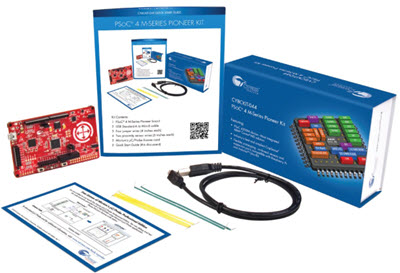|
For novel ideas about building embedded systems (both hardware and firmware), join the 35,000 engineers who subscribe to The Embedded Muse, a free biweekly newsletter. The Muse has no hype and no vendor PR. Click here to subscribe.

|
This month's giveaway is a Cypress CY8KIT-044 PSoC 4 M-series Pioneer kit. Enter here. |
|
By Jack Ganssle
Dr. Dobb's Journal No More
Published 1/19/2009
I get a lot of magazines each month. One of my favorites is Dr. Dobb's Journal. Yes, each issue's cover is festooned with glaring headlines about AJAX, PHP, and other technologies that are as orthogonal to embedded as a Big Mac is to health food. But inside there's sure to be a column of interest to firmware folks. Herb Sutter's articles about concurrent programming are brilliant. And the ads feature many tools and technology that apply directly to the embedded space.
Alas, Dr. Dobb's is going the way so much media is. Declining ad revenue has resulted in the slimming down of all print publications. Many have gone to a web-only presence. Dr. Dobb's is taking a middle path. According to editor Jonathan Erickson (http://www.ddj.com/linux-open-source/212700891) the magazine will be renamed Dr. Dobb's Report, and will now be "delivered as a new monthly section in InformationWeek magazine." Herb Sutter (http://herbsutter.wordpress.com/2008/12/31/the-2008-media-inflection-meet-dr-web-the-new-gorilla/) says the print version will have "some" of the content that will be available on-line.
We've seen this coming for some time. Dr. Dobb's page count seemed to thin each month. Consider the costs to print - and mail - hundreds of thousands of magazines a dozen times a year! How can any print publication compete with the free delivery offered by the Internet?
But Dr. Dobb's was different. They, along with Byte (remember Byte?) were the early magazines of the microprocessor age. Originally the former had the delightful moniker "Dr. Dobb's Journal of Tiny BASIC Calisthenics & Orthodontia" (subtitled "Running Light without Overbyte") and was published in the hippiedom of 1976 by the People's Computer Company. It evolved, changing as the times changed. As haircuts shortened and beards became less common Dr. Dobb's, too, assumed a more professional air. It went from a handful of Xeroxed papers to glossy pages, and thence to a more readable matte appearance.
The good news is that the publication will have more content than ever, no longer restricted by the physical constraints of printing and mailing.
But the web format is less user-friendly than a printed book. It's "pull" technology; one has to make an effort to periodically go to the site and hunt around. A conventional magazine or newspaper instead "pushes" information into a reader's hands. I flip through every page, or at least look hard at the table of contents, of every magazine. Serendipity reigns; facts and ideas I wasn't looking for come leaping off the page. I rip out articles of interest to read during down times, on the plane or waiting in a lobby somewhere.
Perhaps one of those iPhone apps will let me download the content for later perusal. The screen is so small, though. But there is an upside: the phone, which we all always carry around, can contain a huge stack of queued magazines.
From what I read the book industry is, or was before the meltdown, quite healthy. Print is not dead. But, unhappily, periodicals in printed form are dying.